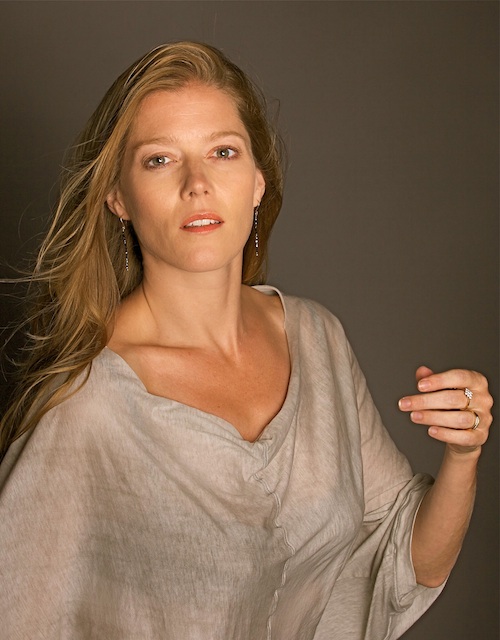
When music doesn’t bite
By Sebastián Spreng, Visual Artist and Classical Music Writer
They have never met, but conductors Pablo Heras Casado and Patrick Dupré Quigley share some curious coincidences. They use three names, the first beginning with “Pa.” They are the same age. They are both local heroes in their communities and pioneers who blaze new trails. They are fast-rising maestros. And, as it happens, on the second weekend in January each conducted two memorable concerts on Miami Beach.
Patrick Dupré Quigley celebrated Seraphic Fire’s 10th birthday with a collection of hits that showed the high quality of the group he founded has remained intact. The concert opened with the same prophetic invocation with which the choir debuted a decade ago: William Billings’ “Majestic God, our muse inspire and fill us with seraphic fire.” The ensemble’s rendition of Duruflé’s Notre Pere and Scarlatti’s Iste Confessor confirmed that Seraphic Fire continues to make early music as few can. These were followed by a variety of pieces: commissions, premieres and war-horses over the past ten years, all reflecting the group’s spirit and versatility. Within this stylistic showcase, Jake Runestad’s I Will Lift Mine Eyes showed off the American ensemble’s roots, and Haitian Sydney Guillame’s Dominus Vobiscum, its Caribbean side. The two worlds were well represented – and balanced by the contagious, devotional fervor of Álvaro Bermúdez’s Padre Nuestro. The tricky counterpoint of Ingraham Marshall’s Hymnodic Delays, originally written for electronic music and transcribed for an a capella choir by Suzanne Hatcher (a Seraphic Fire soprano), was clearly rendered, with just the right humorous touch. Likewise, the group’s fine version of Ariel Ramírez’s Misa Criolla justified the inclusion of what initially seemed an anti-climactic choice. In fluent Spanish, Seraphic Fire lent the Mass a timeless quality and, simultaneously, took us back to its folk origins and to the time it premiered, 1964. Two well-known numbers by Puerto Rican Rafael Hernández – Cachita and El cumbanchero – served as encores and as fitting finale for this well deserved celebration.
Pablo Heras Casado, who started out singing and leading the early-music group he founded in his native Granada, Spain, performed an unusual, masterly devised program with the New World Symphony. It consisted of four complex pieces composed between 1977-2009. The four faced a challenge for both the orchestra and the audience that seemed shocked at first, but then was completely won over. His performance was marked by precision, clarity, confidence and a supreme easiness with the musical language. In addition, he provided rare warmth that illuminates the work’s cryptic message to the audience. It is obvious that the Spaniard has “belled the cat” of contemporary music. The most arduous piece, Palimpsests I and II, by George Benjamin (b. 1960), opened the program. Heras Casado emphasized the fiendish differentiation of musical planes with translucent brushstrokes (that enabled the ear to perceive the different layers of the palimpsests in question) while masterly taking its ferocious rhythmic intricacy, one that could wreck a performance if not properly handled. He obtained a terrific response from the young orchestra fellows.

Soloist Barbara Hannigan dazzled with her rendition of Lonely Child by the ill-fated Claude Vivier (1948-1983). She introduced the piece with a brief insight that sparked the audience’s interest. Murdered in Paris at 34, Vivier, an orphaned and outcast enfant terrible, poured his tormented spirit into this lullaby, which traverses fantastical personal universes with French, English and made-up words. This resulting “long song of loneliness” transcends emotion and pierces the soul, where it remains. Like walking on an expressive razor’s edge, the splendid Canadian soprano gave an ideal rendition, delivering the work of her compatriot from an inner prospective verging on mysticism to a “distancing effect” that allowed the audience to reach its own conclusions. Only a performer of her rank could have rendered it with such eloquence and transparency. Heras Casado provided the indispensable framework, at once dense and translucent, that kept swelling up to the musical climax and vanished exquisitely thereafter. It was a worthy tribute to Vivier were conductor, orchestra and singer became one.

In the second half, Hannigan literally transformed herself into a different singer as the paranoid Gepopo of Mysteries of the Macabre, a suite for coloratura soprano and orchestra extracted from the “anti-opera” Le Grand Macabre by György Ligeti (1923-2006). Again, she provided a clever introduction warning the audience of what was to come, but reality surpassed imagination. She embodied a dominatrix in a black wig and S&M boots, drawing on her superb vocal technique and expressive resources, pouring forth the obsession and bursts of the lethal chief of the secret police of the kingdom of Brueghelland with prodigious aplomb and ease. In her crazed invasion of the stage (which included knocking the conductor off the podium), this schizoid amalgam of Cassandra, Lulu and Queen of the Night delivered the wild staccatos with scalpel-like precision and impeccable humor. With the conductor as her “Prince”, from beginning to end it was an instant classic.
The concert concluded with what in a more conventional program might have been the opening piece: EXPO, by Finland’s Magnus Lindberg (b. 1958). Composed for the New York Philharmonic, it is a deliberate exploration of the possibilities of an orchestra, featuring juxtapositions of timbres that in its celebratory air betray distinct Romantic undertones. Following the musical avalanche of the first three works, its urgency served as a balm reminiscent of Ravel and Debussy. It was another theatrical coup by Heras Casado, designed to soothe the spirit and add a seemingly traditional note to an intense evening of superlative quality.
Pablo Heras Casado and Patrick Dupré Quigley added much needed hope and vitality to Miami’s today musical menu. If in Seraphic Fire’s case, the celebration became an event, the New World Symphony made the event a celebration, proving that, when performed at these heights, “music doesn’t bite.”
Recent Content
-
Artsarticle ·
-
Artsarticle ·
-
Artsarticle ·

